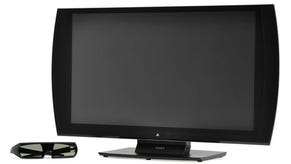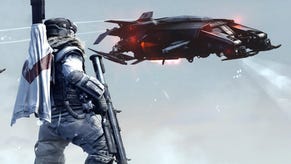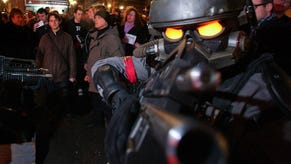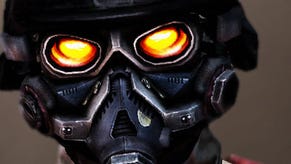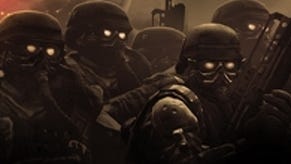Tech Analysis: Killzone 3
Performance, lag and even 3D analysis.
With regard to the game's visuals, Guerrilla appears to have broken out of the "brown" look of Killzone 2 with a more diverse range of environments and effects that allow its standard-setting engine to shine. Over and above the artistic choices we also see one major change to the rendering technology: the preceding game's quincunx anti-aliasing has been culled in favour of the new MLAA technique seen in God of War III and LittleBigPlanet 2.
This has some potentially major ramifications for the engine. Killzone 2's QAA was carried out on the RSX GPU, with Guerrilla on the record as saying that it had plenty of SPU cycles to spare. By using MLAA, the developers are shifting the load from the graphics chip onto the CPU (where most, if not all, of the game's other post-processing effects are carried out). MLAA is a screen-space technique that requires nowhere near the amount of RAM as multi-sampling anti-aliasing techniques like QAA and MSAA, so in theory, by shifting to MLAA, Guerrilla could well be saving up to 18MB of precious GDDR3 video RAM as well as freeing up more GPU cycles for other tasks.
However, it is worth pointing out that MLAA isn't exactly a magic bullet capable of eradicating all forms of aliasing for the reasons we talked about in our recent article. As it is a screen-space technique, it doesn't have the sub-pixel advantages of multi-sampling and Sony's code doesn't use depth or optical flow estimation. It's just been more smartly refined than the original Intel implementation and indeed AMD's recent GPU tech.
The result is that we do see some odd issues, particularly here. The top edges are being lit quite harshly compared to the side facing the player, resulting in some pretty severe dot crawl. In situations like this, the older quincunx technique probably would have produced a significantly more pleasing result.
There are games where quincunx looks poor, as it blurs the entirety of textures in addition to carrying out its usual edge-smoothing duties. On the plus side, the smoothing itself is very good, and there's an undoubted sense that it was the right design decision to take with Killzone 2 - the grim, gritty atmosphere compared with the heavy use of realistically rendered motion blur made it a good match aesthetically.
Arguably, the shift to MLAA in Killzone 3 adds artifacting to a game where edge-aliasing was never really an issue. On the other hand, there is a subtle but important boost to the visuals - the detail is allowed to shine and in places, it almost feels like a fog has lifted. This, combined with Guerrilla's stated intention to introduce more variety and different lighting conditions, should give Killzone 3 a real visual boost over its predecessor.
Another area where Guerrilla has worked extensively is in controller response. One of the biggest issues players had with Killzone 2 was the input latency: the time taken from the player's pad commands to traverse the game code and execute on-screen. This is something of a double-edged sword. On the one hand, there is no doubt whatsoever that the latency issue was very real, very noticeable and occasionally even atrocious. On the other hand, Killzone 2 had a unique look and feel: it wasn't designed to be a twitch shooter in the way that Call of Duty is. The sensation was one of gritty realism, and the setup of a combat trooper weighed down with armour and weapons should be reflected in the controls.
So how does Killzone 3 fare? Let's tackle the input lag issue first. Using Ben Heck's latency controller monitor, we measured Killzone 2 lag and pinned it down to a pretty unimpressive 150ms, at the baseline 30FPS, with longer delays kicking in when the game dropped frames - which is a fairly frequent occurrence. Combined with latency from flat panel displays, often you could be waiting for over a fifth of a second for your commands to register.
Guerrilla is on the record as saying that input latency has improved dramatically in the new game, so we re-ran the tests, using the beta's bot mode to remove any possibility that the online code may affect client-side response.
At the same 30FPS baseline as we had in the Killzone 2 test, we see that input latency has been reduced by two frames - from 150ms down to 116ms. The result is a game that obviously feels much more responsive than its predecessor, and manages to maintain a fairly crisp feeling even when the game drops frames, so it's clear that Guerrilla has really delivered on its promises. In all of our tests thus far, we've yet to see a 30FPS shooter run any faster than 100ms, so while Killzone 3 isn't best-in-class, it's unlikely that you'll notice that much difference compared with the likes of Unreal Tournament and Halo: Reach.


